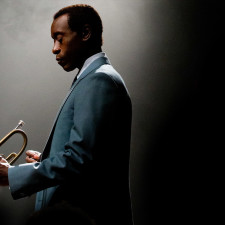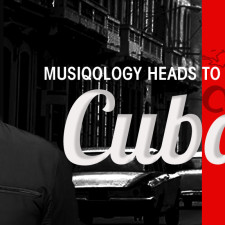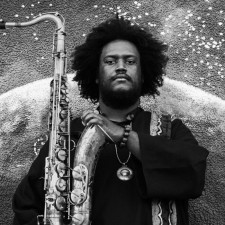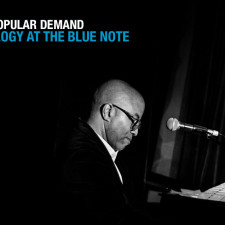See, I’m from Washington DC and we do things a little differently in the nation’s capitol. For one thing, the very nature of my town is that of a melting pot of music, ideas, and people. As such, it is hard to attempt to define the people that inhabit its streets. Although Pennsylvania Avenue, home to both the Capitol and the White House is seen as the heart of Washington DC, in order to find the pulse you need to look a bit uptown.
The U Street Corridor is perhaps one of DC’s most historic neighborhoods. Although the adjacent Adams Morgan neighborhood is well-known for its vibrant nightlife scene, U St has been home to some of the greatest DC musicians since the early twentieth century. Apart from being the hometown of Jazz greats such as Duke Ellington, the corridor housed many of the city’s most prominent classical and jazz venues. Before riots depleted the neighborhood in the 60s, any top jazz performer fortunate enough to book a gig in the capitol was likely going to perform on U St. It was a decade after the riots saw many of the stores and venues burn to the ground that a new form of music which would come to define a generation of young Washingtonians emerged.
 In the 70s and 80s as drugs became intertwined in the fabric of Washington DC the youth sought a new way to express and enjoy themselves: Go-Go. Go-go is a fast-paced form of music that involves complex syncopated-rhythms and heavy percussion instrumentation. The “Godfather of Go-go”, Chuck Brown, began the form by adding different funk and hip-hop rhythms to his band’s repertoire. Folk became the essence of the form. As time evolved, go-go dominated every hood in the Washington DC area. Youth would lineup to hear Chuck Brown and bands like him perform. This tight, but little-known community of artists dominated the music scene in the early 80s. The fast-paced rhythms and loud percussion appealed to the youth of the day who eventually began to create their own dance forms to accompany the musicians.
In the 70s and 80s as drugs became intertwined in the fabric of Washington DC the youth sought a new way to express and enjoy themselves: Go-Go. Go-go is a fast-paced form of music that involves complex syncopated-rhythms and heavy percussion instrumentation. The “Godfather of Go-go”, Chuck Brown, began the form by adding different funk and hip-hop rhythms to his band’s repertoire. Folk became the essence of the form. As time evolved, go-go dominated every hood in the Washington DC area. Youth would lineup to hear Chuck Brown and bands like him perform. This tight, but little-known community of artists dominated the music scene in the early 80s. The fast-paced rhythms and loud percussion appealed to the youth of the day who eventually began to create their own dance forms to accompany the musicians.
As the decade progressed, more and more people started to take note of this music style that was all the rave in Washington. The beauty of it was that expensive instruments were not essential to participate. One of the more successful bands of the time started out using only tin cans, traffic cones, and empty buckets. As more users grew an ear for the form, different groups brought in different instruments like the African congos and timbales. However, what began as an intimate feeling of folk music would soon cross over to the popular forum.
By the late ‘80s music Execs were beginning to hear about this exciting, fast-paced genre of music that had begun in the backyards of DC. Whereas go-go had once been looked at by the joy it could bring a crowd, it was now being looked at by how many dollars it could bring a studio. Initially, go-go artists were being bought out by major labels like Def Jam and Island Records. This soon saw a saturation in the musical excitement the music could bring. The popular Junkyard Band’s hit “Sardines” soon became a benchmark for many other bands of the time. This initial surge in popularity in the late ‘80s forever changed the form. Go-go was no longer a fun exciting outlet for a few Washington youth, it now had the potential to rake in money for its producers.
Junkyard Band – Sardines
As time progressed, the music itself had a return to the basics. Bands in present day find pride in using raw instruments (as opposed to studio-produced tracks) and making their own catchy rhythms. Once the popularity of the genre died down a little, many wanted to remake pure go-go or one that was pure to the original art of the music. In present day, go-go remains in the public eye. Popular artist Wale has found a huge following and is steadily climbing the billboard charts due in part to a pairing with media sensation Lady Gaga and other go-go infused tracks. It appears now that go-go has made a return to the mainstream with artist like Jay-Z and the Roots using go-go, or go-go bands in their own music.
Wale – Chillin
The Roots – Rising Up
The journey for my hometown’s music has been a long and tenuous one: inspired by the emotion of a city and generation, exploited by the capitalistic nature of the music industry, and eventually revived by the integrity of its core. Although it truly embodies the nature of different discourses, it also parallels the struggles of a city. To this day go-go music is the one genre that can say its roots are purely in Washington. Its evolution to include different instruments, rhythms, and artists has profoundly affected DC over time. Welcome to DC.
Mambo Sauce – Welcome to DC
Efayomi Evan Carr
Tags: Chuck Brown, Duke Ellington, Go-Go music, Jazz, The Roots, Wale, Washington DC

 Share On Facebook
Share On Facebook Tweet It
Tweet It








![[Philly EVENT] Screening of Amazing: A Film about Bud Powell](https://musiqology.com/blog/wp-content/uploads/2015/03/bud-powell-225x225.jpg)



